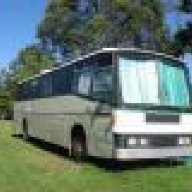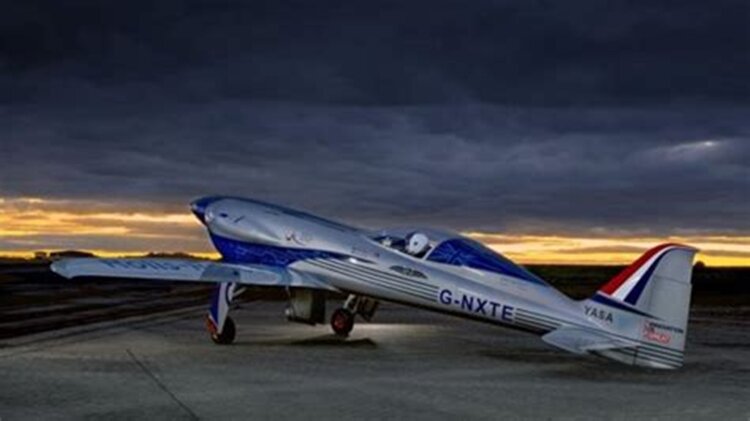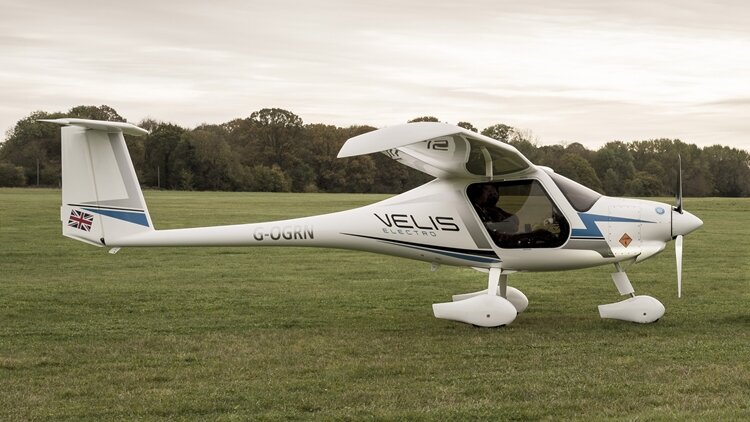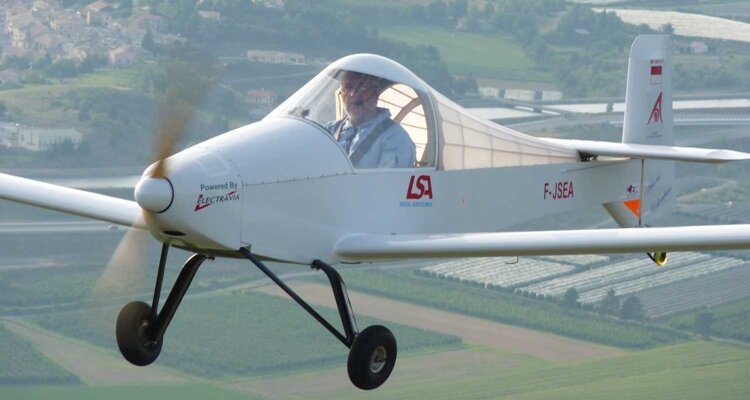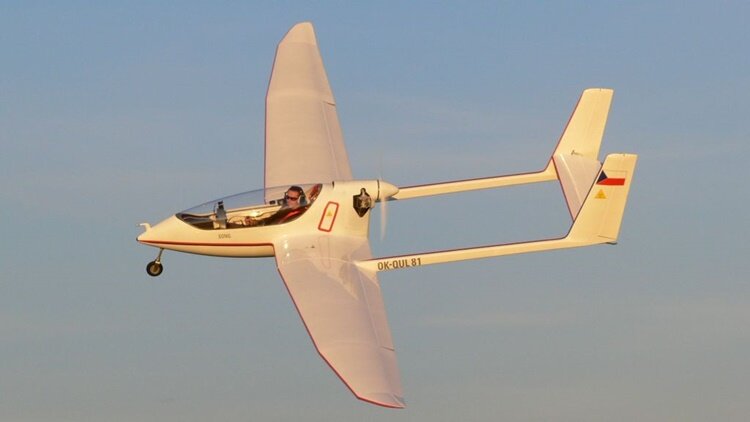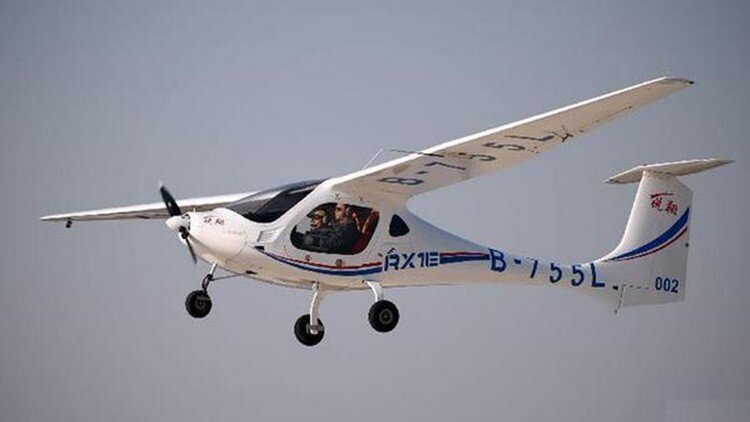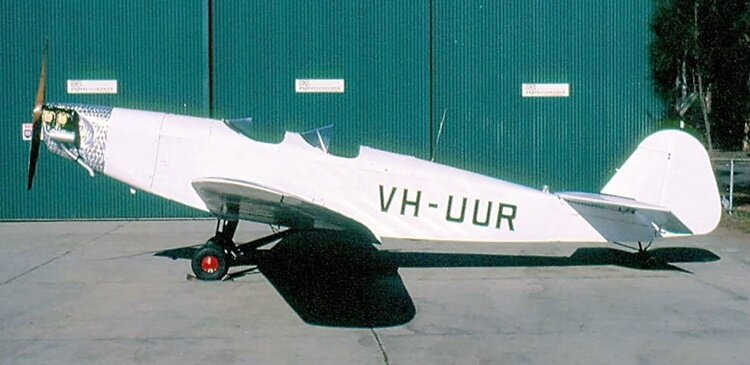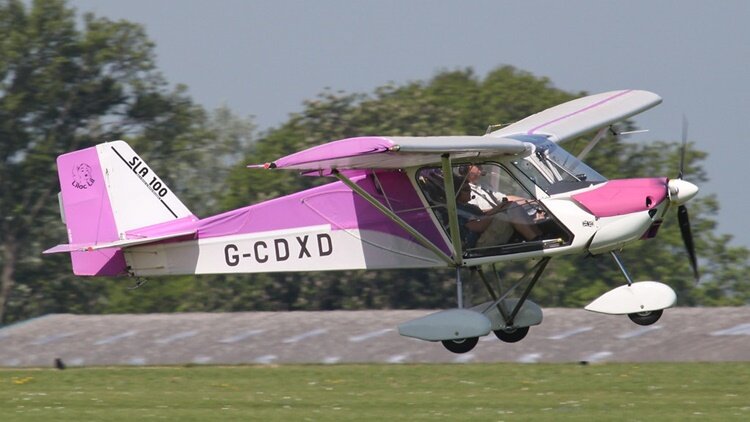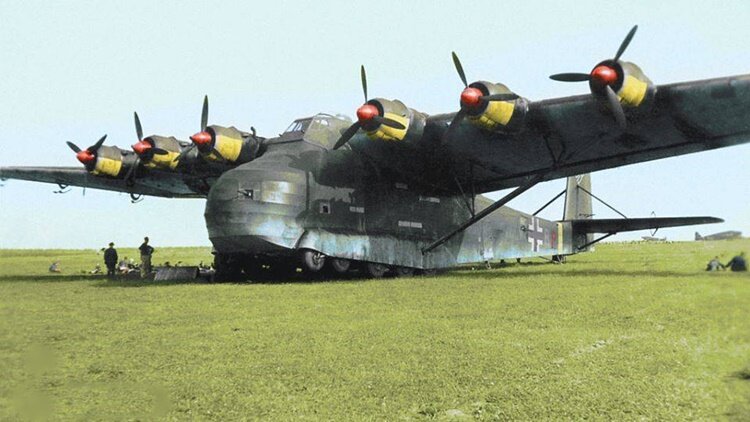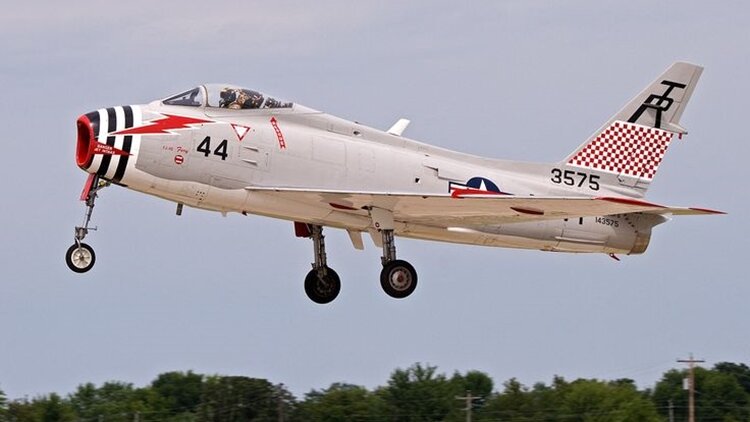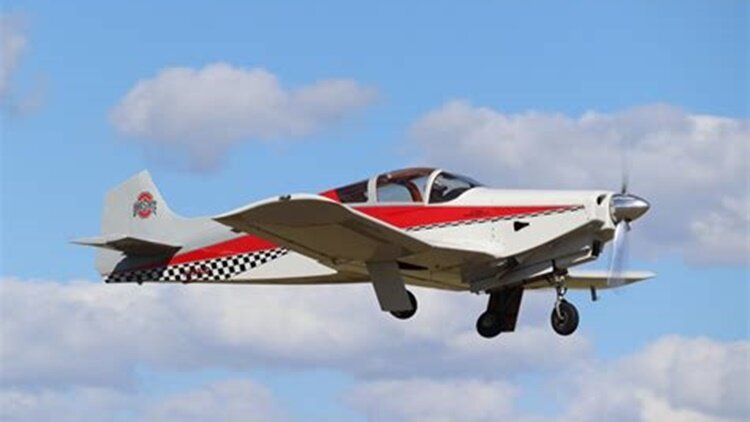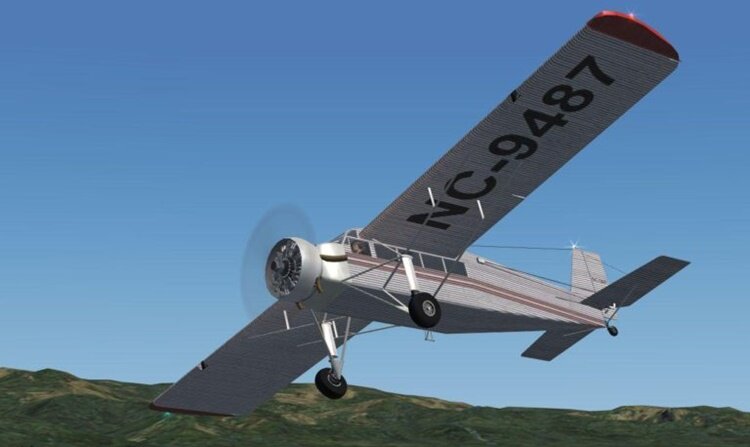-
Posts
7,727 -
Joined
-
Last visited
-
Days Won
67
red750's Achievements

Well-known member (3/3)
-
As you may have noticed, I asked Ian to add an Electric Aircaft category in the Aircraft Section. While checking Wikipedia for aircraft to include in the profiles, I came across a List of Electric Aircraft. A quick check showed that there are about 80 aircraft in this list. I have compiled a few profiles so far with some more to add. However, many of those listed aircraft are projects which have not made it to prototype stage, or have been cancelled. Others include electric versions of existing ICE aircraft, such as the two-seat Cessna 172 Electric, and electric trikes and self launching gliders. If I find sufficient details to complete a profile, I will add it to the section. In the meantime, I still have more ICE aircraft to add to the other categories. Coincidentally, the current count of profiles is 1872.
-
The Rolls-Royce ACCEL (Accelerating the Electrification of Flight) is an electric aircraft demonstrator developed by Rolls-Royce plc. Rolls-Royce developed the ACCEL as a racing aircraft to gain the all-electric air speed record, targeting over 260 kn (480 km/h). The existing electric aircraft record at that time was 182 kn (337 km/h), set in 2017 by a Siemens powered Extra 330. Designed at Gloucestershire Airport, the project is partly funded by the UK government and involves partners such as electric motor and controller manufacturer YASA Limited and aviation start-up Electroflight. The team aimed to reach the 1931 Schneider Trophy speed, which was won by a R-R-powered Supermarine S.6B, reaching 298 kn (552 km/h). On 15 September 2021, Rolls-Royce announced the aircraft, named Spirit of Innovation, had successfully completed its first flight, flying from MoD Boscombe Down for fifteen minutes. It subsequently reached a top speed of 336 kn (622 km/h), and sustained 300 kn (560 km/h) over 3 km, 287 kn (532 km/h) over 15 km, and was able to climb to 3,000 m (9,800 ft) in 3min 22s. The speeds achieved were accepted as world records for electric aircraft by the Fédération Aéronautique Internationale in January 2022. The 7.3 m (24 ft) span aircraft is powered by triple stacked 200kW YASA 750R axial flux motors with a high power density driving a single three-blade propeller spinning at 2,400 RPM. The 750 Volt, 216 kWh battery has 6,480 cells, with cork insulation and active cooling. Battery output power will be 500 hp (373 kW) continuous, reaching 750 kW (1,010 hp) at maximum power.. It is designed to have the highest energy density for an aircraft, and should allow a 170 nmi (310 km) range. The aircraft is derived from the carbon fibre Sharp Nemesis NXT racer, which has a cruising speed of 282 kn (522 km/h) with a 350 hp (261 kW) piston engine, but can reach 355 kn (657 km/h) with a highly tuned engine. The maximum take-off weight of the NXT is 1,200 kg. Rolls-Royce intend the battery, motors and control equipment in a production system to weigh the same as the regular engine and fuel tank in a conventional aircraft, but the battery pack alone in the Spirit of Innovation currently weighs 1350 kg. The aircraft's livery was designed by the renowned Italian designer Mirco Pecorari, known for his expertise in aviation aesthetics and branding. The aircraft is in development and testing, so specifications areestimatews, and are limited.
-
The Pipistrel Velis Electro is a Slovenian light aircraft, designed and produced by Pipistrel of Ajdovščina. The aircraft was EASA CS-LSA fully electric type certified in June 2020 and it is intended primarily for the training aircraft role, particularly multiple successive take-off and landings at the airfield. The design is the first type certified electric aircraft and is supplied complete and ready-to-fly. The aircraft is based on the Pipistrel Virus airframe and features a cantilever high-wing, a two-seats-in-side-by-side configuration in an enclosed cabin accessed via doors. It has a stick shaker and fixed tricycle landing gear and a single electric motor in tractor configuration. The airframe is predominantly made from composite materials. Its 10.71 m (35.1 ft) span wing, has an area of 9.5 m2 (102 sq ft), an aspect ratio of 12.03:1, an IMD 029-b airfoil and mounts three-position flaps, with settings of 0°, 8° and 19°. The sole approved powerplant is the liquid-cooled Pipistrel E-811 electric motor, rated at 57.6 kW (77 hp) at 2500 rpm for 90 seconds for take-off and 49.2 kW (66 hp) at 2350 rpm for continuous operation. The motor was developed in conjunction with the Slovenian engineering companies Emrax and Emsiso. It is powered by a 345 VDC, 20 kWh battery pack, in two 70 kg (150 lb) each, liquid-cooled lithium batteries by Pipistrel, connected in parallel for fault tolerance. One battery is mounted in the nose and one behind the cabin for balance. They take 2 hours to recharge from 30% to 100% capacity, and allow an endurance of up to 50 minutes plus 10 minutes of VFR reserves when flying in proximity of the aerodrome. The motor radiator is mounted in the nose, which necessitates a different engine cowling from the Virus design. The battery radiator is mounted in the rear. The to the liquid cooling and the weight of the battery unit, the batteries are not swappable, unlike the battery replacement system in the Alpha Electro. The-off is not allowed when battery state of charge (SoC) is below 50%. The aircraft has a built-in continuous health-monitoring system displaying the estimated 'age' of the battery, and the battery must be charged using proprietary equipment. The E-811 is the first certified electric aircraft motor and was certified by EASA on 18 May 2020. The Velis Electro has a maximum noise level of 60 dBa. The aircraft has an empty weight of 428 kg (944 lb) and a gross weight of 600 kg (1,300 lb), giving a useful load of 172 kg (379 lb). For more details of development and operational history, click here. Note: There is an electric variant of the Pipistrel Alpha Trainer, which is covered in Recreational (3 Axis) section.
-
The Airbus E-Fan is a prototype two-seater electric aircraft that was under development by Airbus. It was flown in front of the world press at the Farnborough Airshow in the United Kingdom in July 2014. The target market was intended to be pilot training, but production of the aircraft was cancelled in April 2017. Airbus Group developed this electric aircraft with Aero Composites Saintonge. The aircraft uses on-board lithium-ion batteries to power the two electric motors and can carry one pilot and one passenger. A test flight was conducted in April 2014 at Bordeaux–Mérignac Airport, France, landing in front of a large audience, the French Minister of Industry Arnaud Montebourg being one of them. At the 2014 Farnborough Airshow, Airbus announced that the E-Fan 2.0 would go into production by 2017 with a side-by-side seating layout.[3] Airbus stated at that time that there are plans for development of a commercial regional aircraft in the near future. The E-Fan is an all-electric two-seat twin-motor low-wing monoplane of composite material structure. It has a T-tail and a retractable tandem landing gear with outrigger wheels. The two motors are mounted on either side of the rear fuselage. Two production variants were initially planned, a two-seater E-Fan 2.0 for use as a trainer, and the E-Fan 4.0 four-seat touring aircraft. The E-Fan 4.0 appears identical to the E-Fan apart from a fuselage stretch. To increase flight duration the planned E-Fan 4.0 would have had a hybrid-electric system that will have a small engine to charge the battery (like a range extender), which would have increased its duration from 2 hours to 3.5 hours. The first flight of the E-Fan 2.0 was originally planned for 2017 and the E-Fan 4.0 for 2019. The E-fan is of all-composite construction and is propelled by two ducted, variable-pitch fans spun by two electric motors totaling 60 kW of power. Ducting increases thrust while reducing noise, and having the fans mounted centrally provides better control. The motors moving the fans are powered by a series of 250-volt lithium polymer battery packs made by South Korean company Kokam. The batteries are mounted in the inboard section of the wings. They have enough power for one hour and take one hour to recharge. An onboard backup battery is available to make an emergency landing if power runs out while airborne. The E-fan's landing gear consists of a retractable fore and aft wheel, and a fixed wheel under the wings. Unusually for an aircraft, the main wheel is powered by a 6 kW electric motor, which allows the plane to be taxied without the main motors, and is able to accelerate it to 60 km/h (37 mph; 32 kn) for takeoffs. Having the takeoff run performed by the undercarriage relieves some of the burden on the flight motors. In December 2014 Airbus announced that DAHER-SOCATA would complete the design work on the aircraft and certify it. VoltAir, an Airbus subsidiary, developed the initial prototype and worked with Daher-Socata during the testing phase as the project manager. At this point the aircraft became the VoltAir E-Fan. In April 2017 Airbus cancelled production of the E-Fan, preferring to concentrate on a proposed hybrid-electric, regional jet-sized aircraft, with an initial service date of 2030. On 9 July 2015, the E-Fan crossed the English Channel from Lydd Airport to Calais–Dunkerque Airport. It was flown by Didier Esteyne, the chief engineer of the E-Fan. Initially this was claimed as the first electric aircraft to cross the English Channel, but it has since been pointed out that there were previous such flights, including MacCready Solar Challenger as long ago as 1981, and Airbus now say it was the "first all-electric two-engine aircraft" to make the crossing. Siemens has sponsored electric equipment on the E-fan, but not motors. Variants E-Fan Two-seat concept aircraft and technology demonstrator, first flown March 2014. E-Fan 2.0 Proposed all-electric two-seat production variant, initially forecast to fly in 2017. E-Fan 4.0 Proposed hybrid-electric four-seat variant, to fly 2019; a kerosene fuelled generator would have extended endurance from 2 h to 3 h 30 min. E-Thrust Proposed 90-seat regional jet based on the principles of the E-Fan.
-
Report this morning that the CVR shows the PIC ask "Why did you cutoff the fuel?" The CP said "I didn't." No tome to rrestart.
-
Electravia - Helices E-Props is a French aviation manufacturer based in Vaumeilh, specializing in the non-certified light aviation sector. At one time it produced electric propulsion systems and now designs and manufactures carbon fibre propellers for light aircraft. The company was originally organized as an association called APAME to build and fly electric aircraft. It first flew its BL1E Electra on Sunday, 23 December 2007 at Aspres sur Buech airfield, Hautes Alpes, France. Test pilot Christian Vandamme flew the electric-powered, open-cockpit, strut-equipped airplane for 48 minutes, covering 50 km (31 mi). The BL1E Electra is powered by an 18 kW (24 hp) disk-brushed electric engine driven by a 47 kg (104 lb) KOKAM Lithium polymer battery. The BL1E Electra was the first registered aircraft in the world powered by an electric motor running on batteries. The company was founded on 19 September 2008 by Anne Lavrand, Jérémie Buiatti and Christian Vandamme. At the time of its founding it mainly produced electric motors for light aircraft. Starting in 2008, Electravia began designing and manufacturing carbon fibre aircraft propellers, including fixed pitch, ground-adjustable pitch and variable pitch models. Propellers for paramotors, ultralights, light aircraft and UAV are made in the 1,700 m2 (18,000 sq ft) workshop on Sisteron's airfield (LFNS). E-Props propellers claim to be the lightest on the market. No specificatios or performance available for this aircaft. The company has stopped making aircraft and is concentrating on carbon fibre propellers.
-
The Electric Aircraft Corporation ElectraFlyer-ULS is an American electric ultralight motor glider, designed by Randell Fishman and produced by the Electric Aircraft Corporation of Cliffside Park, New Jersey, introduced in late 2012. The aircraft is supplied complete and ready-to-fly. The ElectraFlyer-ULS was designed to comply with the US FAR 103 Ultralight Vehicles rules, including the category's 254 lb (115 kg) empty weight limit. The design has an empty weight of 245 lb (111 kg). The design features a cantilever mid-wing, a single-seat under a bubble canopy, a twin boom tail, fixed tricycle landing gear and a single electric motor in pusher configuration. The aircraft is made from carbon fiber and foam composite materials. The motor and drive train are supplied by the Electric Aircraft Corporation in the US, while the airframe is built under contract by Airsport in the Czech Republic and is adapted from an existing design, the Airsport Song. The drivetrain includes a Fishman-designed 20 hp (15 kW) motor, electronic controller and 3.3 kWh LiPo battery pack. An additional 3.3 kWh battery pack is a US$5,000 option, which gives a two-hour endurance. A two-bladed fixed pitch propeller is standard equipment, but a folding carbon fiber propeller is optional.
-
The Liaoning Ruixiang RX1E is a Chinese two-seat electric aircraft, designed by the Liaoning General Aviation Academy at Shenyang Aerospace University and manufactured by the Liaoning Ruixiang General Aviation Manufacture Company Limited of Shenyang. The aircraft was first shown at the Zhuhai China Airshow, in November 2012 and in 2015 at the AERO Friedrichshafen show in Germany. The result of a three-year development process started in June 2012, the RX1E is an electric powered, two-seat side-by-side configuration, carbon fibre composite construction aircraft with a T-tail and tricycle landing gear and is one of the first electric airplanes in production. The company said in April 2015 that they had 28 orders for the design. The manufacturer claims that the aircraft conforms to US Light-sport Aircraft requirements and has a Type Design Approval from the Civil Aviation Administration of China, issued in 2015. As of September 2016 it does not appear on the US Federal Aviation Administration list of approved LSAs and, in fact, the category excludes electric-powered aircraft and requires a single reciprocating engine. The first two customer aircraft were delivered in June 2015. The launch customer was the Liaoning Ruixiang General Aviation Co., which will employ the aircraft in the flight training role. An improved version, the RX1E-A, was first flown in November 2017 and features a two-hour endurance and a new ballistic parachute design. The original RX1E has a 45-minute endurance.
-
Klemm L 25, later Klemm Kl 25 is a successful German light leisure, sports and training monoplane aircraft, developed in 1928. More than 600 aircraft were built, and manufacturing licenses were sold to the United Kingdom and the United States. With a low cantilever wing, fixed landing gear, and two open cockpits, the aircraft was developed by Hanns Klemm, who used his previous design, the Daimler L20, as a starting point. It first flew on a 20 hp (15 kW) Daimler F7502 engine. About 30 different versions of the Kl 25 were made, and these were equipped with engines ranging from 32 to 70 kW (43 to 94 hp). The fuselage was covered with plywood. Depending on the model, the aircraft's weight was 620 to 720 kg (1,367 to 1,587 lb), and it had a 10.5 to 13 m (34 to 43 ft) wingspan. Takeoff was achieved at only 50 km/h (31 mph) and the maximum speed was between 150 and 160 km/h (93 and 99 mph). In relation to similar aircraft of the time, assembly was very easy, and this made it a very popular aircraft. According to the sales brochures, only 25% of the engine's power was needed to keep the aircraft flying, compared to biplanes of the period, which required 50% engine power. About 600 were built in Germany between 1929 and 1936, serving with various flight training organizations, with either wheels, skis, or floats. 15 were sold to Britain before the Second World War, being fitted with a variety of domestic engines, while 28 more were built by British Klemm Aeroplane Company as the B.A. Swallow. Production in the United States was carried out by the Aeromarine-Klemm Company which enjoyed moderate success, as well as developing models for the American market, in isolation from the parent company, with about 120 built of all models. Klemm L 25s took part in many competitions, among others in International Touring Aircraft Competitions (Europa Rundflug) in 1929 (best 4th place) and in 1930 (best 2nd and 3rd places, L 25E variant). A total of about 720 units were buillt. Variants Germany L 25 a Built between 1927 and 1929, equipped with a 22 PS (21.7 hp; 16.2 kW) Daimler F 7502 engine L 25 I Built between 1928 and 1929, equipped with a 45 PS (44.4 hp; 33.1 kW) Salmson AD.9 engine L 25 Ia (Specifications below) L 25 IW Floatplane version of the Ia, with two wooden floats supported by steel-tube struts in inverted 'W' configuration L 25 b Built in 1931, equipped with a 22 PS (21.7 hp; 16.2 kW) Daimler F 7502 engine L 25 b VII Built in 1931, equipped with a 60 PS (59.2 hp; 44.1 kW) Hirth HM 60 engine L 25 d II Built in 1933, equipped with an 88 PS (86.8 hp; 64.7 kW) Siemens-Halske Sh 13a engine Klemm L.25 d VII R built in 1934 L 25 d VII Equipped with an 80 PS (78.9 hp; 58.8 kW) Hirth HM 60R engine L 25 IVa Equipped with Armstrong Siddeley Genet engine VL 25 Va Three-seater variant, with a closed canopy, equipped with 103 PS (101.6 hp; 75.8 kW) Argus As 8 straight engine[2] L 25 Ve (see L 25E) For Europa Rundflug 1930 L 25E (L 25 Ve) Special competition variant (E for Europa Rundflug 1930), with a closed canopy, smaller span, equipped with a 103 PS (101.6 hp; 75.8 kW) Argus As 8 United Kingdom British Klemm Aeroplane Company B.K. Swallow British Aircraft Manufacturing Co. B.A. Swallow II United States Aeromarine-Klemm AKL-25 Aeromarine-Klemm AKL-70 Aeromarine-Klemm Model 70 Trainer
-
The Medway SLA100 Executive, also called the Medway SLA 100 Executive, is a British ultralight aircraft designed and produced by Medway Microlights, of Rochester, Kent. The aircraft is supplied as a kit for amateur construction or as a complete ready-to-fly-aircraft. The aircraft was designed to comply with the British BCAR Section "S" and the Fédération Aéronautique Internationale microlight rules. It features a strut-braced high-wing, a two-seats-in-side-by-side configuration enclosed cockpit, fixed tricycle landing gear and a single engine in tractor configuration. The SLA100 is made from bolted-together aluminium tubing, with its flying surfaces covered in Dacron sailcloth. Its 9.7 m (31.8 ft) span wing has an area of 13.8 m2 (149 sq ft) and is supported by V-struts with jury struts. Standard engines available are the 80 hp (60 kW) Rotax 912UL and the 100 hp (75 kW) Rotax 912ULS four-stroke powerplants. The SA100 has been certified to the UK BCAR Section "S" standard. Variants SLA100 Executive Standard model with a 9.7 m (31.8 ft) wing span SLA100 Clipper Clipped wing model, introduced in 2010 and still under development in 2015.
-
The Messerschmitt Me 323 Gigant ("Giant") was a German military transport aircraft of World War II. It was a powered variant of the Me 321 military glider and was the largest land-based transport aircraft to fly during the war. In total, 213 were made, with 15 being converted from the Me 321. The Me 323 was the result of a 1940 German requirement for a large assault glider in preparation for Operation Sea Lion, the projected invasion of Great Britain. The DFS 230 light glider had already proven its worth in the Battle of Fort Eben-Emael in Belgium (the first ever assault by gliderborne troops), and would later be used in the invasion of Crete in 1941. However, in order to mount an invasion across the English Channel, the Germans would need to be able to airlift vehicles and other heavy equipment as part of an initial assault wave. Although Operation Sea Lion was cancelled, the requirement for a heavy air transport capability remained, with the focus shifting to the forthcoming Operation Barbarossa, the invasion of the Soviet Union. Early in 1941, as a result of feedback from Transport Command pilots in Russia, the decision was taken to produce a motorized variant of the Me 321, to be designated Me 323. French Gnome et Rhône GR14N radial engines, rated at 1,180 PS (1,164 hp, 868 kW) for take-off as used in the Bloch MB.175 aircraft were chosen for use. This would reduce the burden on Germany's strained industry. Like the Me 321, the Me 323 had massive, semicantilever, high-mounted wings, which were braced from the fuselage out to the middle of the wing. To reduce weight and save aluminium, much of the wing was made of plywood and fabric, while the fuselage was of metal-tube construction with wooden spars and covered with doped fabric, with heavy bracing in the floor to support the payload. The "D" series had a crew of five - two pilots, two flight engineers, and a radio operator. Two gunners could also be carried. The flight engineers occupied two small cabins, one in each wing between the inboard and centre engines. The engineers were intended to monitor engine synchronisation and allow the pilot to fly without worrying about engine status, although the pilot could override the engineers' decisions on engine and propeller control. For more details of development, design, operational history and 18 variants, click here.
-
The North American FJ-4 Fury is a swept-wing carrier-capable fighter-bomber for the United States Navy and Marine Corps. The final development in a lineage that included the Air Force's F-86 Sabre, the FJ-4 shared its general layout and engine with the earlier FJ-3, but featured an entirely new wing design and was a vastly different design in its final embodiment. Compared to that of the FJ-3, the FJ-4's new wing was much thinner, with a six percent thickness-to-chord ratio, and featured skin panels milled from solid alloy plates. It also had an increased area, and tapered more sharply towards the tips. Slight camber behind the leading edge improved low speed characteristics. The main landing gear design had to be considerably modified to fold wheel and strut within the contours of the new wing. The track of the main wheels was increased and because they were closer to the center of gravity, there was less weight on the nosewheel. Wing folding was limited to the outer wing panels. The FJ-4 was intended as an all-weather interceptor, a role that required considerable range on internal fuel. The FJ-4 had 50% more fuel capacity than the FJ-3 and was lightened by omitting armor and reducing ammunition capacity. The new wing was "wet"; that is, it provided for integral fuel tankage. The fuselage was deepened to add more fuel, and had a distinctive "razorback" rear deck. A modified cockpit made the pilot more comfortable during the longer missions. The tail surfaces were also extensively modified and had a thinner profile. The overall changes resulted in an aircraft that had little in common with the earlier models, although a family resemblance was still present. The two prototypes had the same Wright J65-W-4 engine as the FJ-3, but production aircraft had the J65-W-16A of 7,700 lbf (34 kN) thrust. The first FJ-4 flew on 28 October 1954 and delivery began in February 1955. Of the original order for 221, the last 71 were modified in the FJ-4B fighter-bomber version. This had a stronger wing with six instead of four underwing stations and stronger landing gear. Additional aerodynamic brakes under the aft fuselage made landing safer by allowing pilots to use higher thrust settings, and were also useful for dive attacks. External load was doubled. The most important characteristic of the FJ-4B, however, was that it was capable of carrying a nuclear weapon on the inboard port station. It was equipped with the LABS or Low-Altitude Bombing System for the delivery of nuclear weapons. The Navy was eager to maintain a nuclear role in its rivalry with the Air Force, and it equipped 10 squadrons with the FJ-4B. It was also flown by three Marine squadrons. In April 1956 the Navy ordered 151 more FJ-4Bs, for a total of 152 FJ-4s and 222 FJ-4Bs produced, and 1,115 FJ aircraft of all variants delivered to the Navy and Marine Corps. The Navy ordered six FJ-4s to be converted to FJ-4F to test rocket engines, but only two were completed. These featured the North American Rocketdyne AR-1 engine, installed in a fairing above the tail pipe of the jet engine. It ran on hydrogen peroxide and JP-4 jet fuel, and provided an additional 5,000 lbf (22 kN) of thrust for short periods. The FJ-4F reached speeds of Mach 1.41 and altitude of 71,000 ft (21,600 m). With the 1962 adoption of the Tri-Service aircraft designation system, the FJ-4 became the F-1E and the FJ-4B the AF-1E. AF-1Es served with United States Naval Reserve units until the late 1960s. Number built 374 Variants XFJ-4 Two prototypes with a J65-W-4 engine and re-designed fuselage. YFJ-4 One FJ-4 used for development testing. FJ-4 Fury Single-seat fighter-bomber version, powered by a 7,700 lbf (34 kN) Wright J65-W-16A turbojet engine, 150 built. FJ-4B Fury Single-seat ground-attack close support version with six underwing pylons, 222 built. FJ-4F Fury Test and evaluation aircraft, fitted with an auxiliary rocket motor and supplementary fuel tank, two conversions from FJ-4. F-1E Fury Redesignation of the FJ-4. AF-1E Fury Redesignation of the FJ-4B. AF-1F (NA-295) Proposed light-attack version with TF30 engine, competitor to the A-7; not built.
-
The Jeffair Barracuda is a high-performance sporting monoplane that was developed in the United States in the 1970s and is marketed for homebuilding. Designed and built by Geoffrey Siers, the prototype won the prize for "Most Outstanding New Design" at the EAA Fly-in in 1976. It was a low-wing cantilever monoplane of wooden construction with retractable tricycle undercarriage and side-by-side seating for two. Around 150 sets of plans had sold by 1977. Geoffrey Siers was a former RAF pilot and engineer for Boeing in 1967. He set out to design an aircraft that was fast, aerobatic, two place, and had range to fly long cross-country flights. The aircraft was refined after a full size cockpit mockup was made. The lightweight construction of the plywood-covered wooden de Havilland Mosquito was the inspiration for the materials choice. The retractable landing gear came from a Piper PA-24 Comanche. The wings were a three-piece design. Test flights were performed in 1975. The aircraft takes off at 70 mph (113 km/h) and climbs at 2000 feet per minute (10.2 m/s). Full flap stalls were recorded as low as 54 mph (87 km/h).
-
https://www.msn.com/en-au/news/world/air-india-crash-probe-focuses-on-engine-fuel-control-switches-the-air-current-reports/ar-AA1IdVPY?ocid=winp2fptaskbarhover&cvid=3eb0f1b15e064ce19a15c4cd4535a20a&ei=36
-
The Metal Aircraft Flamingo was a monoplane produced in Cincinnati, Ohio by the Metal Aircraft Corporation in the 1930s. The Metal Aircraft Corporation purchased the design from the Halpin Development Co. and unveiled it at the 1929 National Air Races with Elinor Smith. Following an accident at Bowman Field in May 1928, the prototype Flamingo was redesigned with a different nose, windscreen, and tail. The interior was insulated with Balsam-Wool Blanket. The Flamingo was first flown from Lunken Airport on 8 April 1928 by Thomas E. Halpin. At one point, the aircraft carried an African-American porter in a red suit named Benny Smith. Following a teaser, marketing for the new airplane began in March 1929 and dealers were being solicited by the following month. One G-2-W, named El Rio Caroní, is best remembered for its role in the discovery of Angel Falls by Jimmy Angel in 1935. Although well known to the local indigenous population, the falls had been glimpsed only by European explorers until Jimmy Angel crash-landed while attempting to land above the falls on Auyán-tepui during gold exploration. The Metal Aircraft Corporation Flamingo that crashed above the falls was recovered by helicopter in the 1960s by the Venezuelan government and is on display at the entrance of the Ciudad Bolívar airport, in Venezuela. A replica was put in its place for visitors of the crash site. Other operators included the Mason & Dixon airline. Another operator of the aircraft was United States Airways which flew a route from Denver to Kansas City in the early 1930s. Stops were made Goodland, Salina, and Topeka, Kansas. Number built 21 Variants Halpin Flamingo six-passenger 410hp P&W G-1 five-passenger 450hp P&W G-2 six-passenger G-2-H six-passenger 525hp P&W G-2-W (Specifications below) eight-passenger 410hp P&W G-MT-6 five-passenger 410 or 525 P&W



